
In Conversation with Phil Root
Describe the place materials play in your work: its locality, place making?
For the past few years I have really let materials and process guide the direction of my practice. In 2021 I had a public art commission in Lyde Green, North Bristol where there used to be a large brickworks up until the 1970's. The idea of the brick and rapidly vanishing local industries lead me to build and fire a kiln made entirely of new build housing waste.

How does working with these materials, rich with context and labor, impact the outcome of your practice?
Working with materials like dug clay, waste wood and bricks has helped create a stronger material storytelling in my work, coming from a fine art background, materials were always used as a way of positioning an idea, but nowadays I let them position me.
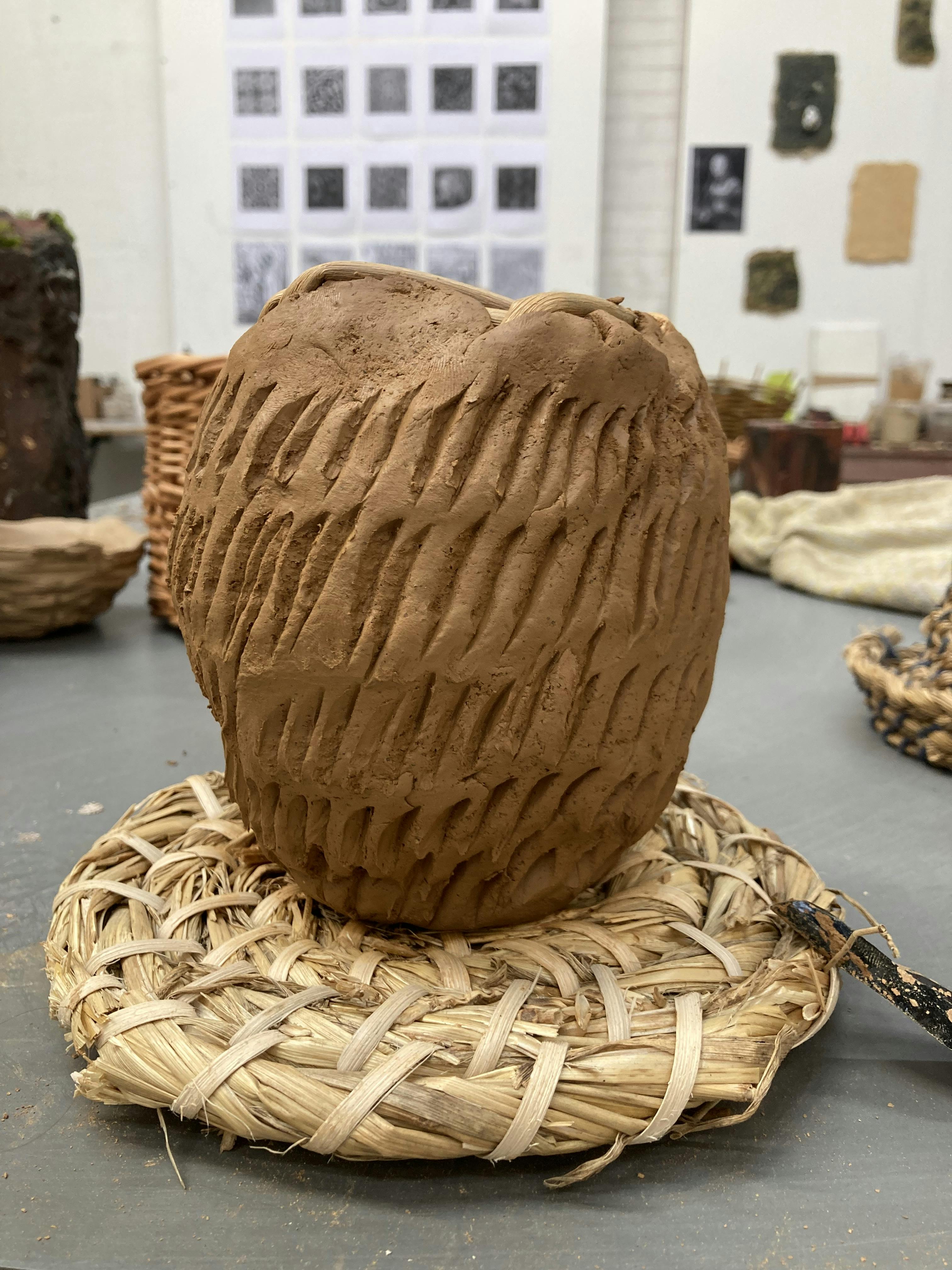
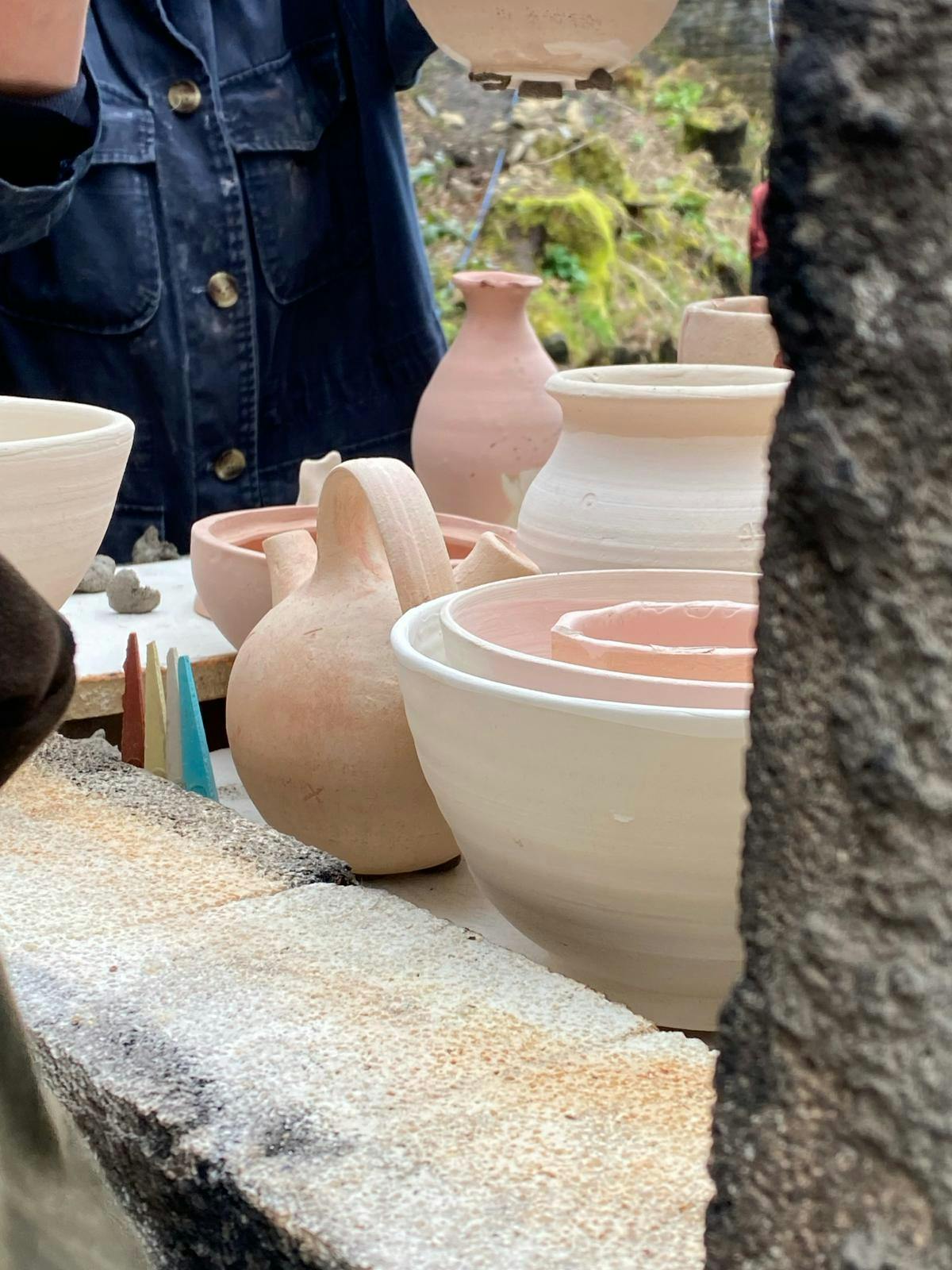
Is it essential to work with local materials rather than purchased ones? How so?
I work with a mix, but I would say that ceramics has definitely always included an element of found or local materials. I can't claim to be able to source and process every single material I use, but at the moment I'm working with a slip made of 50% calcined egg shells which come from my own consumption, I've noticed that small blue spots are appearing when fired, which I can only assume comes from the ink used to stamp the date / info on the egg shell, which goes to show the intimacies you can discover when processing materials yourself.
You extensively use wood ash in your work, what drew you to this material? How does the process of collecting and processing it affect your work?
Discovering wood ash has definitely had the most impact on my thinking around materiality. The plant absorbs minerals during it's lifetime and when burnt, carbon is released and you're left with the mineral content, I see this like a fingerprint. When the ash is fired in a kiln the elements combine to create an almost perfect glass, it's like having a conversation with the earth, it shows you what it's made of, what it can be transformed into. I think human's need to have these conversations with our planet in order to understand our impact, grief and connection to it.

What process do you follow when creating – does the material imply the outcome or does it exist alongside an idea?
I would say that I'm never 100% material driven, I want my art to express what's inside myself, my interests, what I'm feeling / processing at certain times in my life, but I can say that my awareness of material agency has only become stronger the more my practice has become ceramics focused.
Is there a particular project that was pivotal in your practice? What has led to material focused work?
Between 2019 - 2020 I worked on a series of works for an exhibition entitled New Build at Broadway Gallery, Letchworth which was curated by Kris Day. The works attempted to channel the psychic imprint of a new build housing estate being built upon an ancient ley line. This series of work made me research more on the sentience of landscape, works like Vibrant Matter by Jane Bennet as well as expanded fields of non-fiction like Iain Sinclair and Bruce Chatwin to writers like Ursula K. Le Guin and Alan Garner made it possible for me to start working with the earth as an exchange rather than an investigation.
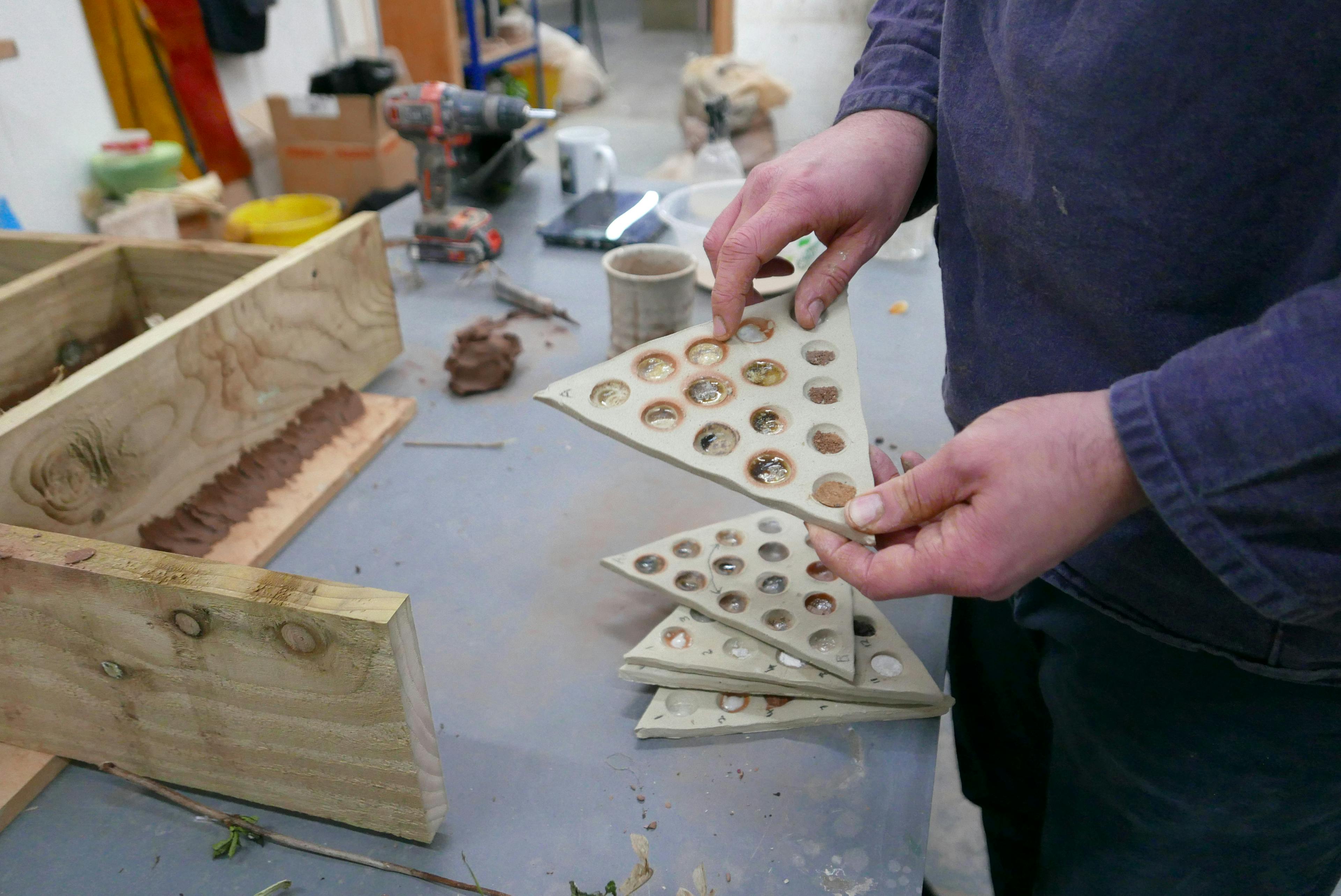
Your project at Lyde Green Pottery stands out in particular. You describe it as a sustainable wood firing and wild clay resource. How did this project come about?
The project started as a public art commission but has since evolved into crowdfunded community resource. I realised that firing with wood is a rare and extremely situation specific, you need some space, not too close to any residential areas etc with enough space to store wood etc. It's been extremely intensive and challenging setting up the kiln, but I've had help from a core group of artists, potters and enthusiasts who have lent their time to make the project happen. There is also an abundance of great earthenware clay (formerly used to make bricks) which I can use and run workshops exploring digging and processing clays from the ground.
Alternative firing takes an important place in your practice as well as the educational aspect of it – has this developed organically? Are alternative methods of firing essential to your work?
I fired work painted with glaze in electric kilns for around 10 years before becoming curious about the firing process, I think it happened naturally in tandem with my glaze chemistry education, when everything clicked it made sense to me to fire with flame. The time you spend cooking your work, watching and listening to the flame, the more of a relationship you develop with the final works, you have seen it's transformation first hand. There is also a kind of post-industrial, post-capitalism feel to it, when our resource heavy infrastructures collapse, for sure one of the first things we'll need to do it cook pots again.
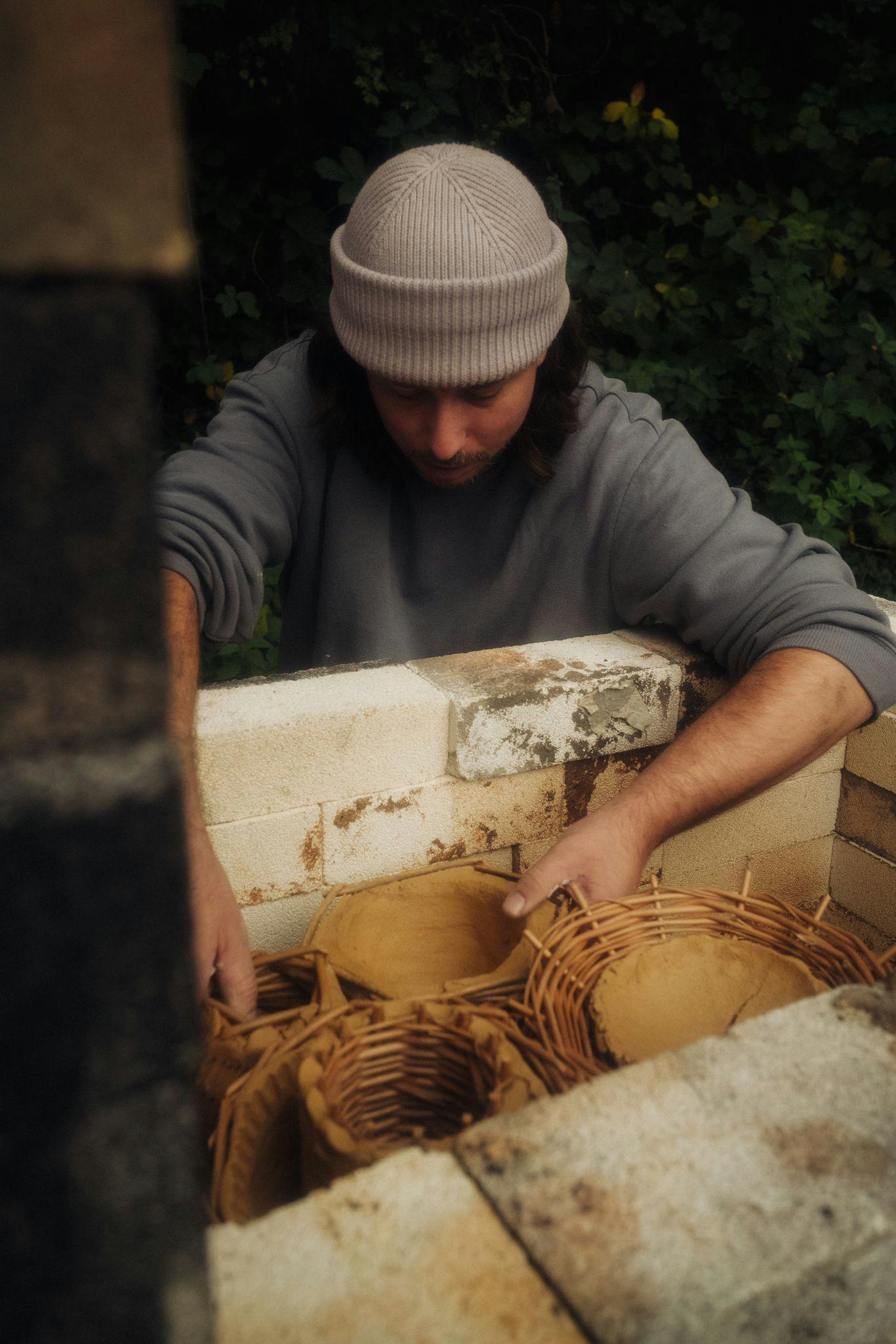
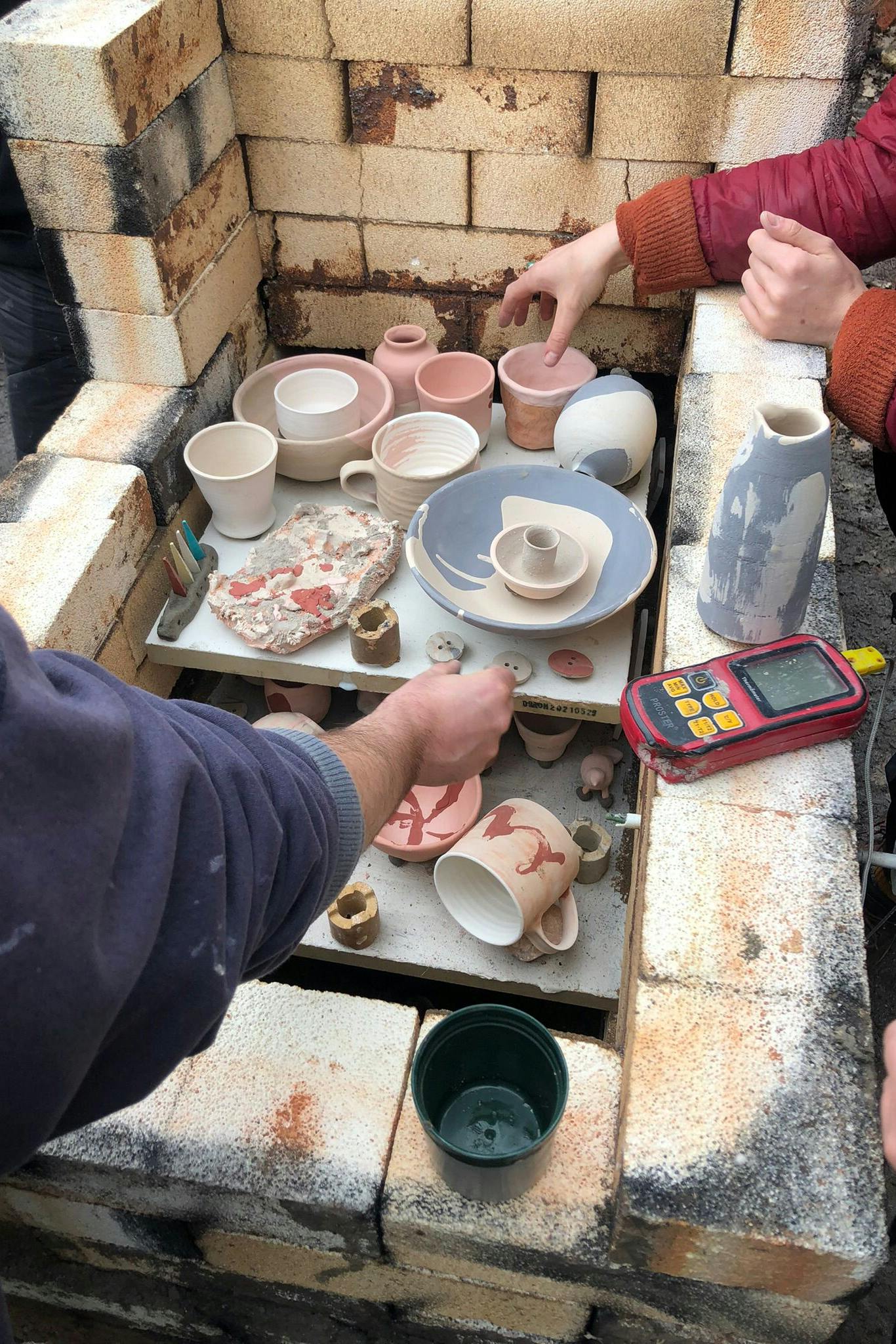
What method do you follow when collecting materials/testing? Please share any practical tips, steps you take when testing clays/glazes.
One of the best ways to find clay is via building sites and construction, if you see someone building an extension in their back garden, chances are they'll be digging clay up and wanting to dispose of it! Also if you work with a construction site, they may be able to provide data on the soil analysis, so you can find out if any contaminants are present. As for wood ash, if you know someone with an open fire or lots of wood needing burning, ask if you can collect the ash, old pubs in winter are also a good source. Always test your clay in a small stoneware dish to find it's melting point, some are extremely low at around 1000 degrees, so hold there own at stoneware temps, but you don't want anything melting and ruining a kiln shelf!
Photography © Emily Seffar, Troy Baird, Ian Knight and Petros Voyatzakis
https://philrootstudio.com/
@philroot